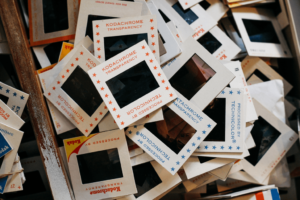
Many image file formats support transparency, also known as alpha channels. This includes GIF (animated or static), PNG and TIFF, as well as the vector graphic format SVG.
Especially in graphic design, PNG is very popular, while many websites use SVG for easily scalable logos with transparent background.
JPG files, on the other hand, are not known for supporting transparency. This might change in the near future though! Read more to find out how JPG might revolutionize how we use transparent graphics and images on the web.
Image Files With Alpha Channel
Those image files used due to their ability to support transparency come with a few disadvantages. GIF images, for example, typically have less image quality than other images. TIFF and PNG files, however, come with very large file sizes.
We used the following image as an example, saving it in different file formats. The GIF had a file size of 170 KB, but the quality was worse than that of the PNG that had a file size of 416 KB. The TIFF file was the largest with a file size of 15 MB.

The need for relatively good image quality with high compression rates that lower the file size arose. Thus, eyes turned to an image format, that already provided such a function, just without the alpha channel that’s necessary for transparency: JPG.
Transparent JPG Files
JPG is one of the most widespread and best-known image formats on the web. It is supported by most image editors, photo manipulation programs, image viewers, and the like. Next to the manufacturer-specific camera RAW files, most if not all digital cameras and DSLR cameras also save photos in the JPG format.
This makes JPG a good basis for creating a usable image file with transparency.
Between 1997 and 2000, the Joint Photographic Experts Group committee worked on developing and improving on JPG. This “new and improved” JPG format is known as either “JPG 2000” or under the file format extension “.jp2“.
Find out more about JP2 here.
Despite the existence of this separate file format, more and more files with the .jpg extension can be found that contain an alpha layer. This might be because the JP2 format did not become as widely popular as the Joint Photographics Experts Group may have hoped. This might change now that the already known and liked format can support transparency as well.
